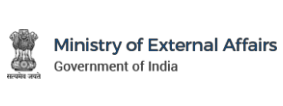Washington, DC
1. At the outset, I wish to thank Secretary Clinton for facilitating this first-ever Higher Education Summit between the two largest democracies in the world. I recall that it was eleven months ago that Secretary Clinton and I recognized that education is one of the primary pillars of the India-US strategic partnership. This Higher Education Summit is a culmination of that recognition.
2. It is only through education that we hope to empower populations across the globe to confront the challenges of the 21st century. Without doubt, US defined the milestones of the 20th century; while India, as you, Secretary Clinton, described recently - is a defining story-line of early 21st century.
3. I also wish to welcome industry and academia to this Summit. Without them, the defining moments of tomorrow will be beyond our reach. The platforms that you create with our young will etch the contours of those defining moments.
4. The USA epitomises excellence in education, innovation and research. Through fundamental research and visionary entrepreneurship, you have fostered the emergence of new ecosystems for public good. We, on the other hand, are a nascent democracy. Our young population, almost the size of Europe, is energetic, on the move and full of hope.
5. The young are our future. We have a responsibility to create an appropriate environment to help them plan their future. We must help them face the challenges of tomorrow to reshape the world. In a global, interconnected, mutually dependent world, the way forward is through building partnerships. This historic Summit will forge a new collaborative association in which our young can draw inspiration from your benchmarks of excellence in education & innovation and channelise their energies for public good. Today, we dedicate our partnership for a better tomorrow.
6. The challenges of the 21st century are qualitatively different from those in the past. They do not recognise national boundaries. They are truly global. No nation on its own can hope to confront them. Nations are defined by boundaries, but in the 21st century nations will have to transcend them in thought and action for sustainable and affordable solutions. Food security, global warming and the environment, demands on energy, water, security in physical and virtual spaces, healthcare are all matters that we need to address together.
7. Business as usual is a sure recipe for global disaster. The global economy will not be defined by financial flows and trade but by global, collaborative, knowledge networks where ideas move seamlessly. The future of knowledge creation will emerge through partnership for the common good. Social networks and resource sharing in cyber-space are precursors to the development of knowledge networks that will aim to address the problems of tomorrow. Technology has led to the “death of distance”. Partnerships would lead to the germination of knowledge.
8. Research and innovation will require collaboration of multiple knowledge partners – those who have the capacity to create, share, and apply new knowledge in cultures of mutual learning and continuous innovation. Creativity can flourish only in an environment where inquiry is encouraged and the status quo challenged. In this, India and the U.S, with their democratic traditions, openness of thought, spirit of tolerance, rule of law, respect for institutions and understanding of diversity are natural partners in our quest for lasting solutions.
9. Let me now outline very briefly the challenges that confronts us in India. More than 100 million youth - the combined labour forces of Britain, France, Italy and Spain - are projected to join the workforce by 2020. This will be a great potential resource only if they are empowered with education and skills to leverage available global opportunities. If we fail to do this, our demographic advantage will be lost and our youth alienated. For us, it is a fundamental imperative that our young have access to affordable, quality education. We must embrace three principles: First, to provide for all our young access to educational opportunities; second, reduce financial barriers to ensure access; and third, ensure quality with accountability.
10. The Gross Enrollment Ratio (GER) in higher education in India is presently around mere 15%, about 10% below the world average. We shall endeavour to increase our GER to 30% by 2020. This would require us to provide for opportunities in higher education for an additional thirty million children by 2020. To do that, we will need to build an additional 1000 universities and 50,000 colleges. To serve these institutions, we will require quality faculty of over a million assisted by quality support structures. The “new” demand for higher education in India is emerging from three groups that traditionally did not have easy access to higher education: the disadvantaged and marginalized, women and a “rising” lower-middle class.
11. But this is only a part of the picture. We, in India, to sustain our own economic growth require a skilled workforce of about 500 million by 2022. As the centre of gravity of global economic activity shifts towards Asia, this workforce can provide the basis for sustained economic growth. Besides, with declining demographics around the world, the global community will require a suitably skilled workforce to serve its needs. Our demographic advantage could, thereby, become an integral part of the global workforce.
12. For imparting skills to our young, we need to build a robust Vocational Education system that links education to the world of work. This requires the award of qualifications of international standards accepted by industry globally. This will enable mobility of students across vocational and higher education. Students endowed with skill-sets sought by industry globally will then serve its needs. We can draw from the experiences of community colleges in the U.S as we proceed to develop the vocational education system in India.
13. Ladies and Gentlemen, I also believe that the nature of delivery of educational services is changing rapidly. Technology has facilitated collaborative learning through the democratizing influence of the web. It may be too early to write the epitaph for the classroom, but the classrooms of the 21st century will be different from those that served us in the past. The content of pedagogy too would be radically altered. The silos that fragmented knowledge have already started collapsing. Customized learning across cultures will be the dominant theme of higher education. We need to open up the university as a learning space, embrace collaborative knowledge production, and break down the walls between institutions. I foresee a day where an engineering student from the Indian Institute of Technology (IIT) can register for a liberal arts course offered by Yale while simultaneously enrolling for an economics course in Stanford. The university as a physical entity may no longer remain the unit of learning space.
14. We together need to lay the foundation for this change Our enduring partnership will define the future of education. Our relationship is unique. We must strengthen and deepen it. For this academia, industry and policymakers must work together. Knowledge has no limits. Let our partnership dismantle the boundaries that limit us. That is our destiny. Let us embrace it.
Thank you







